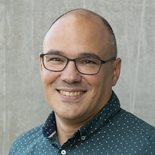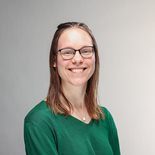Key objectives
- To develop novel therapeutic strategies to correct genetic defects in IRD
- To develop novel therapeutic strategies to alter dysregulated pathways in AMD
- To improve the delivery of therapeutic molecules to the retina
Our concept Gene-based therapy
In this pillar we will design, develop and optimize a combination of existing and novel gene-based therapeutic strategies, aiming to translate these to IRD and AMD patients.
learn moreOur concept Gene-based therapy
In this Pillar, we will design, develop and optimize a combination of existing and novel gene-based therapeutic strategies, aiming to translate these to IRD and AMD patients. The therapeutic strategies that will be developed here will be mainly applicable to IRD and AMD patients who demonstrate retinal integrity in order to ‘revive’ the cells that are still present yet not properly functioning. The enormous allelic heterogeneity of IRD can be considered a complicating factor for therapy development but also offers exciting opportunities for highly specific molecular interventions tailored to an individuals’ genetic defect, by correcting the root cause of disease. These intervention strategies lie at the DNA or RNA level, depending on the type of mutation underlying IRD. For AMD, similar innovative technologies will be employed to reduce the genetic risk of getting AMD, and to modulate the levels of genes whose expression is dysregulated in the pathologic pathways characteristic for this disease. Finally, since a precise spatiotemporal delivery of therapeutic molecules is instrumental for success, this Pillar will also be dedicated to the design and optimization of delivery strategies. Depending on the therapeutic molecules that have to be delivered, and the target cell(s) within the retina, either viral or non-viral vectors will be employed.
Our approach
The research proposed for pillar 1 will be performed in 3 work packages.
Work Package 1.1: Gene-based therapies
Work Package 1.2: Gene-based therapies for AMD
Work Package 1.3: Delivery
Our innovation
We will implement highly innovative strategies while building on firmly established strategies.
learn moreOur innovation
We will implement highly innovative strategies, such as antisense oligonucleotide (AON)-based allele-specific breakdown, PRIME editing, and inserting variants protective for AMD, that are entirely new for retinal diseases, while building on firmly established strategies (gene augmentation, AON-based splicing modulation). In addition, we aim to optimize the repertoire of suitable delivery vectors by comparing currently available to novel vector systems. Thus, we will be able to design and refine truly personalized, innovative and effective treatments for visually impaired individuals, precisely tailored at their genetic profile and disease characteristics.
WP leaders
Camiel Boon
About me
I am a clinician-scientist, working as an eye doctor and researcher. My research motto is: ‘From bedside to bench, and back’. The highlight of my career thus is without a doubt that I was able to perform some of the first-in-human gene therapy eye surgeries at Amsterdam UMC.
Your contribution to Lifelong VISION
As a doctor, the specific expertise that I bring to Lifelong VISION is a translational view, with an emphasis on novel gene therapy techniques (gene replacement, CRISPR-based techniques) in a multidisciplinary setting. In addition, my aim is to develop better insights into the most sensitive clinical endpoints to assess disease progression and treatment efficacy in patients. I am a team player, enjoying crosstalk and close collaboration between disciplines. This makes Lifelong VISION the perfect stimulating research environment for me and my research group.
Team

Enrico Mastrobattista
Professor Pharmaceutical Biotechnology & Delivery Utrecht University
read moreEnrico Mastrobattista
About me
Enrico Mastrobattista is a professor at the Pharmaceutics division at Utrecht University. He is an expert on the design and preclinical testing of non-viral delivery systems for proteins, peptides and nucleic acids, with a particular emphasis on nanomedicines.
Your contribution to Lifelong VISION
Being part of pillar 1, I will develop synthetic delivery systems that can target gene editing tools, including CRISPR-Cas9 and prime editors, into the posterior segment of the eye after intravitreal or subretinal injection.
Erwin van Wijk
About me
I started working at Radboudumc in 2001. My field of study is to (a) better understand and (b) develop effective genetic therapies for otogenetic disorders and Usher syndrome.
Contribution to Lifelong VISION
I contribute to Pillar 1 and Pillar 2 by bringing expertise in proteomics techniques in order to unravel pathogenic mechanisms underlying IRDs, generating and characterizing zebrafish IRD models for basic scientific and translational purposes, and ample experience in developing splicing modulating treatments using antisense oligonucleotides (RNA) or CRISPR/Cas9 (DNA) for the future treatment of IRDs.
Fred de Winter
About me
I am trained as a molecular neurobiologist. Currently, I work in the Netherlands Institute for Neuroscience where I execute the “Gene Therapy” research line of the Neuroregeneration group.
Your contribution to Lifelong VISION
With over 20 years of experience in the field of gene therapy, I will contribute to Pillar and deliver my expertise on viral vector technology and the effective use of viral gene therapy vectors to gain biological understanding of, and to develop treatments for, retinal diseases.
Joost Verhaagen
About me
Joost Verhaagen is team leader and emeritus professor Netherlands Institute for Neuroscience, Department of Neuroregeneration, Amsterdam, The Netherlands. I study ways to repair the injured central nervous system, including the retina. Working mostly in the field of gene therapy with a recent focus on minimally-invasive and cell-selective gene targeting.
Your contribution to Lifelong VISION
My laboratory specialises in adeno-associated viral vector development and applications aiming to cell-selectively target therapeutic genes to the injured CNS using minimally-invasive approaches. This toolbox of technologies will be available to LLV’s efforts under Pillar 1 to treat retinal diseases by gene therapy.
Roland Brock
About me
I am Group leader Targeted Nanomedicines that aims to understand and develop drug delivery strategies for RNAs and to apply these nanomedicine strategies in a clinical context.
Contribution to Lifelong VISION
In Pillar 1 we contribute to optimizing drug delivery. Activities in my group range from the synthesis and formulation of bioactive molecules to the detailed analysis of cellular activity using advanced microscopy to ex vivo (patho-)physiological models with which we aim to make significant contributions to various disease areas.
Susanne Roosing
About me
I started at the Radboudumc in 2007. After my PhD (2010-2014) at Radboudumc, a post-doc at Rockefeller University (New York, USA, 2014-2016), I started my own research group ‘Blindness Genomics and Transcriptomics’ in 2016.
Contribution to Lifelong VISION
My expertise resides in the field of inherited retinal disease gene discovery. Using state of the art short and long reach sequencing approaches my team and I uncover new genetic causes underlying retinal disease. In Pillar 1, we contribute to identifying ultra rare variants in known or newly identified inherited retinal disease genes suitable for development of a genetic treatment.
Sterre Mulder
About me
I am a PhD candidate at the Radboud UMC, driven by a deep curiosity about the human body, on both the cellular and the organ level, and by a passion to improve patients’ lives. With a bachelor’s in Biomedical Sciences at Leiden University and a master’s in Molecular Mechanisms of Disease at Radboud University, I am well-equipped to start groundbreaking research. During several internships, I have learnt a lot about immunology and infectious diseases. Now, as a PhD candidate, I am excited to enter the field of inherited retinal diseases and hopefully make a meaningful impact on health care.
Your contribution to Lifelong VISION
My project is under the supervision of prof. Rob Collin and Dr. Susanne Roosing. As a part of Pillar 1, we aim to identify and develop novel therapeutics for inherited retinal diseases, using molecular technologies at the level of nucleic acids. Potential therapies will be tested in iPSC-derived retinal organoids.








